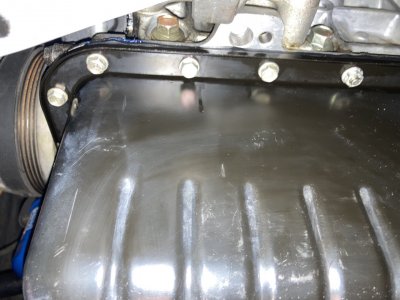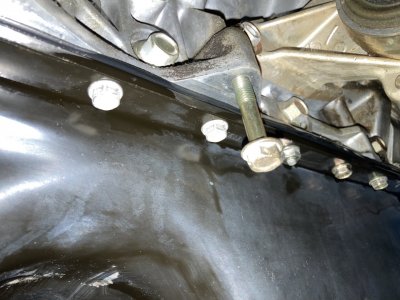I would be inclined to order a new gasket. I use Permatex Permashield almost exclusively and it allows for repeated separation of parts when it is used in place of the gasket (metal to metal flange). You are using it as a gasket dressing which falls within the Permashield use guide (this is the way I also typically use it) ; but, I don't know whether the gasket will survive when you separate the pan.
The instructions for Permashield are kind of minimal. It just says "Apply thin film or bead to both surfaces". I have always assumed that since Permashield is intended as a gasketless flange sealant, this meant apply Permashield to both sides of the surfaces to be mated. In this case, if you were assembling without a gasket, you would run a bead on the mating surfaces of the oil pan and the block surface. If you are using a gasket, then I would run a bead on the block surface, a bead on the top side of the gasket, a bead on the bottom side of the gasket and a bead on the pan mating surface. This is what I did on a vintage '70s Volvo which was a chronic leaker from the pan and it seems to have fixed the issue.
First observation is that if you applied Permashield only to the top of the gasket and the bottom of the block. the gasket - pan interface remains unsealed. The second observation is that if you just apply the permashield in the corners, you potentially create a gap in the gasket - block mating surface between the corners because the pernashield in the corners does not squish to zero. If you followed the Permatex instructions to allow the Permashield to completely dry before assembling the parts this makes the Permashield even more resistant to being squished flat).
From personal experience, you do need to let the Permashield dry before assembling. Applying the Permashield to the mating surfaces and then assembling before it was dry resulted in a non sealing joint for me.










